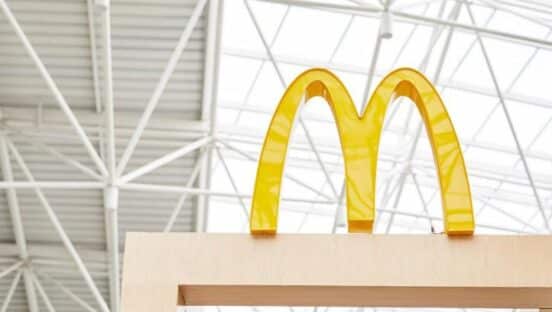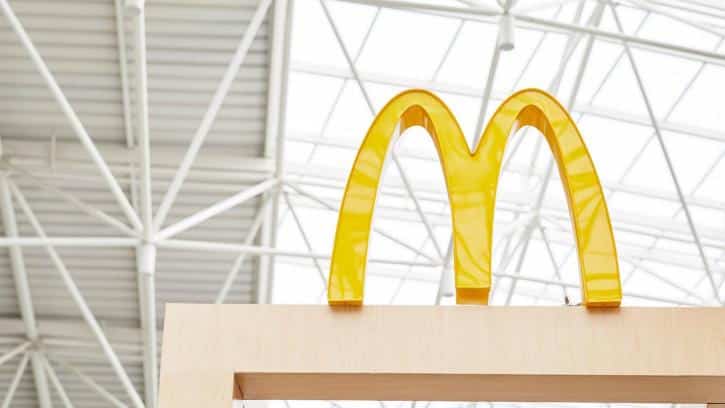The quick-service landscape has already begun to show effects of California’s upcoming fast-food wage law that plans to bring the minimum rate to $20 per hour. Perhaps the biggest news recently being Pizza Hut franchisees PacPizza and Southern California Pizza Co. potentially removing north of 1,000 delivery driver jobs. The franchisees shared in a WARN Act notice they were eliminating first-party delivery services and, in turn, slicing drivers from the payroll. That would amount to more than 1,200 jobs, including 841 in SoCal alone. This would go into effect in February in areas such as L.A., Sacramento, and Palm Springs.
More common of late have been promises from large-chain executives to take additional price to counter the legislation. Chipotle and McDonald’s hinted at such moves in November, with the latter’s CEO, Chris Kempczinski, telling analysts on an earnings calls franchisee cash flow in California would “certainly” take a hit. The state houses some 1,300 McDonald’s, along with more than 230 franchisees and over 70,000 hourly employees and managers. The company is open in 90 percent of the state’s counties, including 300-plus in Los Angeles County. Only counting McDonald’s presence in the Golden State, it would be among the top 30 biggest quick-service chains in America. Roughly 15 percent of Chipotle’s footprint is in California, too.
As a refresher, California’s AB 1228 will introduce a Fast Food Council designed to monitor the quick-service segment. In addition to minimum wage for restaurant employees rising to $20 per hour—above the $16 per hour beginning in January for other businesses—the Council could annually increase pay by 3.5 percent or according to changes in the Consumer Price Index, whichever is lower. The law is expected to impact more than 500,000 fast-food workers in the state. AB 1228 only covers chains with 60 units or more in the U.S., but higher wages at bigger companies will likely have a secondary effect on smaller concepts and independent restaurants that can’t afford the same level of labor costs.
Simon-Kucher recently conducted a survey of 1,000 consumers to shed light on Californians’ expectations and attitudes toward the planned wage increase, as well as their anticipation of price changes in the sector.
Broadly, the group noted, there’s been a looming deadline to increase labor wages for quick-service employees for years.
“Growth will be dependent on how restaurants react, as many are overindexed given the state’s population,” the company said. “Our analysis reveals a pivotal crossroads for quick-service restaurants.”
Findings:
Seventy percent of Californians in the survey said they were aware or understood the details of the policy change.
So, while chains are hyper aware of the upcoming wage increase to $20 per hour, California consumers don’t appear to be.
Ninety-one percent of Californians noted they expect restaurants to pass costs through at least to some extent.
In other terms, once consumers understand the planned wage increase, they expect prices to increase to cover costs.
“The crux lies in crafting the right communication strategy,” says Philip Daus, partner at Simon-Kucher. “Mitigating the impact of price increases is not just about numbers; it’s about connecting with consumers transparently and articulating the value behind the adjustments. Effective communication is the linchpin for navigating these changes successfully.”
Expectation of price increase was highest among some of the most frequent quick-service consumers—25– to 44-year-olds (75 percent eat at counter-service restaurants more than once per month), with median expected meal increase at $4 instead of $3.
There will be room to increase prices as a result of this bill, the survey found. When asked about their expectation for a $10 combo meal, California consumers said they expect the price of a $10 meal to increase by a median of $3.
“It’s essential to recognize that the stated price increase expectation of $3, equivalent to 30 percent, may be an overstatement,” says Dave Clement, also a partner at Simon-Kucher. “History tells us that price increases exceeding the 10 percent threshold often trigger consumer backlash. Striking a delicate balance between covering costs and respecting consumer sentiment is critical.”
Sixty-one percent of California consumers added they were favorable to the wage increases, while 15 percent were indifferent and 24 percent against.
Simon-Kucher said this point shows most consumers are in favor of the bill once they understand what it is—quick-service brands can leverage this fact by communicating price increases allow better wages for workers.
Fifty-one percent of consumers in the survey noted they expect to visit quick-service restaurants fewer times because of the legislation change (due to it being more expensive). Of those who plan to decrease visits, 91 percent said they will cook more at home.
This response varied by location: in San Francisco, only 23 percent would decrease visits versus 37 percent in Los Angeles and 52 percent in San Diego. “The quick-service restaurant response to the wage increase does not need to be a ‘peanut butter spread’ increase strategy across the whole of California,” Daus says. “To lessen the blow, brands should differentiate prices across locations while taking purchasing occasions, income levels of consumer segments and other criteria in consideration that drive willingness-to-pay.”
Thirty-eight percent of California consumers will look to promotions, the survey found, with more frequent quick-service restaurant consumers placing an even higher importance on promotions (43 percent-plus for diners who order from quick-serves at least once a week).
With all this in mind, promotions become more pivotal in winning the occasion over competitors and staying home for quick-service consumers in a post-increase world, Simon-Kucher said. “Mitigating customer churn in the face of price increases, promotions emerge as a powerful tool,” Clement adds. “However, it will be critical to manage them tightly to prevent margin erosion. Take, for example, buy-one-get-one promotions on premium products – while aiming to retain loyalty, such strategies can inadvertently increase price sensitivity, potentially proving counterproductive in their most loyal segments and challenging overall profitability.”
Twenty-eight percent of consumers said they expect to order less expensive entrees, meaning a range of menu entrée prices can give customers the option to choose a more affordable meal and stay at your chain, even with price increases, Simon-Kucher suggested. “Loyalty programs stand out as a cornerstone for preventing churn and fostering customer retention,” Daus says. “These programs not only nurture brand allegiance but also empower businesses to make targeted offers, strategically catering to the most price-sensitive customer segments. In a world where customer relationships are paramount, loyalty programs are the linchpin for sustainable success and resilience against market fluctuations.”









